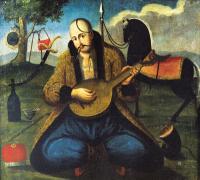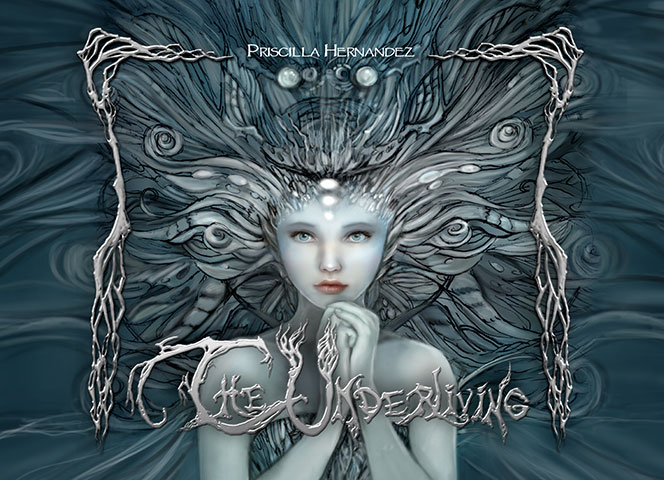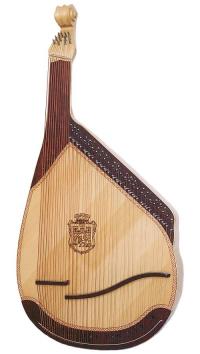Ukranian Bandura
B7WET7MYVXUP
The Bandura is the national instrument of Ukranie and a potent symbol of this country. The instrument is also also pretty popular in Russia. The bandura combines the elements of a lute and a psaltery.
The metal strings are played open with the tips of the fingers and nails in a manner similar to the harp. The sound when plucked is really exquisite and somehow bright between the sound of an harp and harpsichord. It produces deep single bass string patterns, also is characteristic the offbeat chords played by the right hand alternating with the bass notes, sweeping chromatic flourishes and ornaments on the upper high pitched strings and tremolo effects rubbing the fingers in the high pitched strings too
Above: Bandura played by Natalia Golub.
The bandura is a multi-stringed Ukrainian folk instrument. The great majority of banduras found to purchase range from 36 strings to concert professional ones that can have up to 68 chromatically tuned strings (through 5½ octaves).Though used most in folk music the instrument is used in large ensembles however it is an effective and mesmerizing solo instrument and is also sought after as an accompaniment to vocal groups of various kinds and composers. The strings are plucked with the ends of the fingers and nails, giving the instrument a slightly metallic sound, like a cross between the harp and the harpsichord. The back is usually dug out of a single piece of willow, while the front soundboard is of spruce. Played when seated, the left hand usually wraps around the top of the bandura to pluck the bass strings while the right reaches across to play melody or chords on the higher pitched strings, as seen in the following picture.

Banduras were first mentioned in 6th century Greek chronicles as a type of gusli (a russian instrument very similar to the kantele). The modern instrument can more precisely be said to derive from a lute-like instrument. called the kobza, dug out from a solid piece of timber. This became extremely popular in Ukraine and beyond during the era of the Ukrainian Kozaks/Cossacks (16th-18th centuries). During this time the instrument underwent certain structural changes such as the addition of secondary strings along a widened soundboard, which later became one of its distinguishing features.It was then where a special class of musician called kobzar emerged. These were the Ukrainian equivalent of the troubadours of France and typically blind. The kobzars sang epic ballads called dumy about the exploits of the Kozaks against foreign invaders, reminding the people of their past glories and tragedies. They accompanied themselves on the bandura, which gradually developed into the instrument pictured above and they were normally blind. The bandura was alsotraditionally played by soldiers and it was a compulsory instrument to play. Whenever soldiers were wounded and couldn't fight anymore, playing the bandura became their profession. At the beginning of the XX they were thought to be all dead but the instrument rescue was promoted and it experimented a revival later in that century thanks to Hnat Khotkevych managed to find a small number of them and reinvigorated the tradition through promoted performances. The bandura became extremely popular, being taught in many music schools and conservatoriums, as Ukraine enjoyed a very brief period of independence at the end of World War One and also some autonomy during the early period after forced incorporation into the USSR . In the 1930s, Soviet authorities took measures to curtail national aspects of Ukrainian culture (see Russification). This included any interest in the bandura. Various sanctions were introduced to limit cultural activities that were deemed nationalistic. When these sanctions proved to have little effect on the spreading of such cultural artifacts, bandurists often came under harsh persecution from the Soviet authoritie. But after that period players were rehabilitated and Oochestras of banduras were formed, and they were also incorporated into otherwise Russian folk orchestras of domras and balalaikas.Many Soviet Ukrainian composers wrote serious, complex works such as full length sonatas and concertos for bandura during the 20th century plus many arrangements of and variations on Ukrainian folk songs and dances.

Above: Kobza bandura player
During it’s evolution it was used by traveling minstrels or kobzari to accompany their story telling – usually these stories were of epic kozak battles and heroic deeds while facing invaders of the Ukrainian homeland.
Some recommended links
-I will recommend you (if only for historical reasons) and also for details of different models and evolution (from fretted to unfretted) of the instrument to read very complete information about the Bandura in wikipedia.
-Here you can see a blog of a bandura maker so you can see pictures of the making of process.
-Article about traditional folk ukranian instruments
Where to buy one:
I keep investigating further on this so I'll update soon, so far Ebay does list banduras regularly, though scarce I've seen listed some rare very expensive vintage ones and some affordable student models too. If you don't find any keep on checking because some sellers often re-list the item. Below you can see an example bandura found in bay.
I found also this ukranian luthier called Trembita Guitars that sells Banduras directly from Ukrania.(Lviv)
- Login to post comments


















